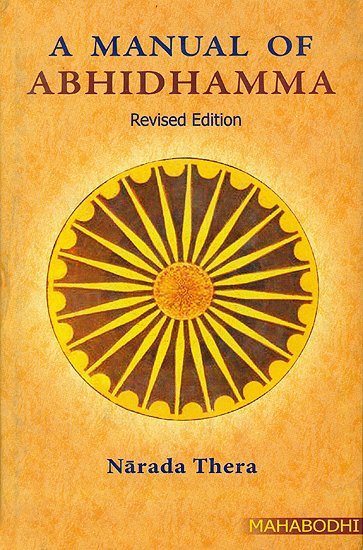A Manual of Abhidhamma
by Nārada Thera | 80,494 words | ISBN-13: 9789380336510
In the Abhidhammattha Sangaha there is a brief exposition of the Law of Dependent Origination, followed by a descriptive account of the Causal Relations that finds no parallel in any other philosophy. Edited in the original Pali Text with English Translation and Explanatory Notes by Narada Maha Thera....
§ 19.
- Ahetukesu pana hasanacitte tāva chanda vajjitā Aññasamāna dvādasā dhammā sangaham gacchanti.
- Tathā votthapane chanda-pīti-vajjitā.
- Sukhasantīrane chanda-viriya-vajjitā.
- Manodhātuttikā-hetukapatisandhiyugale chanda-pīti-viriya-vajjitā.
- Dvipañcaviññane pakinnakavajjitā te y'eva sangayhanti'-ti sabbathā' pi
Attharasasu ahetukesu gananavasena catudhā va sangaho hotī'ti.
§ 20.
Dvādasekādasa dasa satta cā'ti catubbidho
Atthārasāhetukesu cittuppādesu sangaho.
Ahetukesu sabbattha satta sesā yathāraham
Iti vitthārato vuttā tettimsavidha sangaho.
Ittham cittāviyuttānam sampayogañ ca sangaham
Ñatvā bhedam yathāyogam cittena samamuddise'ti
(translation)
§ 19.
- With respect to Rootless, in the consciousness of aesthetic pleasure[1], to begin with, twelve unmoral mental states, excluding conation, enter into combination. (7 + 5 = l2)
- Likewise they occur in the Determining[2] consciousness, excluding conation and joy. (7 + 4 = 11 )
- In the Investigating consciousness,[3] accompanied by pleasure, all but conation and effort. (7 + 4 = 11)
- In the Mano-dhātu triple[4] and in the pair of rootless relinking[5] types of consciousness, all except conation, joy, and effort. (7 + 3 - 10)
- In the two types of fivefold sense-consciousness[6] all enter into combination except the Particulars.(7)
Thus in all the eighteen types of rootless consciousness the mental states, numerically considered, constitute four groups.
§ 20. Twelve , eleven , ten, seven - thus their grouping with respect to the eighteen rootless types of consciousness is fourfold.
In all the rootless the seven (Universals) occur. The rest (Particulars) arise accordingly. Thus in detail the groupings are told in thirty-three ways.[7]
Understanding thus the combinations and synthesis of the mental adjuncts, let one explain their union with the consciousness accordingly.[8]
Footnotes and references:
[1]:
In the consciousness connected with laughter there is no wish-to-do, See Ch. 1, p.31.
[2]:
It is the manodvāravajjana-mind-door consciousness-that assumes the name votthapana - Determining.
[3]:
Although santīrana means investigating, it is a passive resultant consciousness. It lacks both will and effort.
[4]:
Manodhātu - lit., the mere faculty of apprehension (mananamatta' meva dhātu). It comprises the pancadvārāvajjana - sense-door consciousness, and the two sampaticchanas - recipient consciousness. The ten types of sense-consciousness are called dvipañca viññānadhātu. The remaining seventy-six types of consciousness are termed manoviññānadhātu, as they excel others in apprehension.
Both sampaticchanas are accompanied by upekkhā which does not coexist with pīti. Like the santīrana these two are resultants and are passive. Therefore they lack both effort and will. In the pancadvārāvajjana, too, as in manodvārāvajjana effort and will are lacking.
[5]:
The two santīranas accompanied by upekkhā - both moral and immoral resultants are known as the ahetuka patisandhi yugala the pair of rootless relinking types of consciousness. Conception in woeful states is obtained by the akusala ahetuka santīrana, and amongst human beings as congenitally blind, deaf, etc., by the kusata ahetuka santīrana. This pair is also accompanied by upekkhā.
[6]:
They are mere passive types of resultant consciousness.
[7]:
Namely, i. 5 in anuttara; ii. 5 in mahaggata; iii. 12 in kāmāvacara; iv. 7 in akusala; v. 4 in ahetuka; = 33.
[8]:
In this chapter are explained in what types of consciousness the respective mental states are present and what types of mental states occur in each type of consciousness.
he author concludes the chapter advising the readers to explain the union of these mental states with each consciousness accordingly as, for example, - Universals are eighty-nine-fold because they are present in all the types of consciousness, phassa of the Particulars is fifty-fivefold because it arises in fifty-five types of consciousness, etc.
